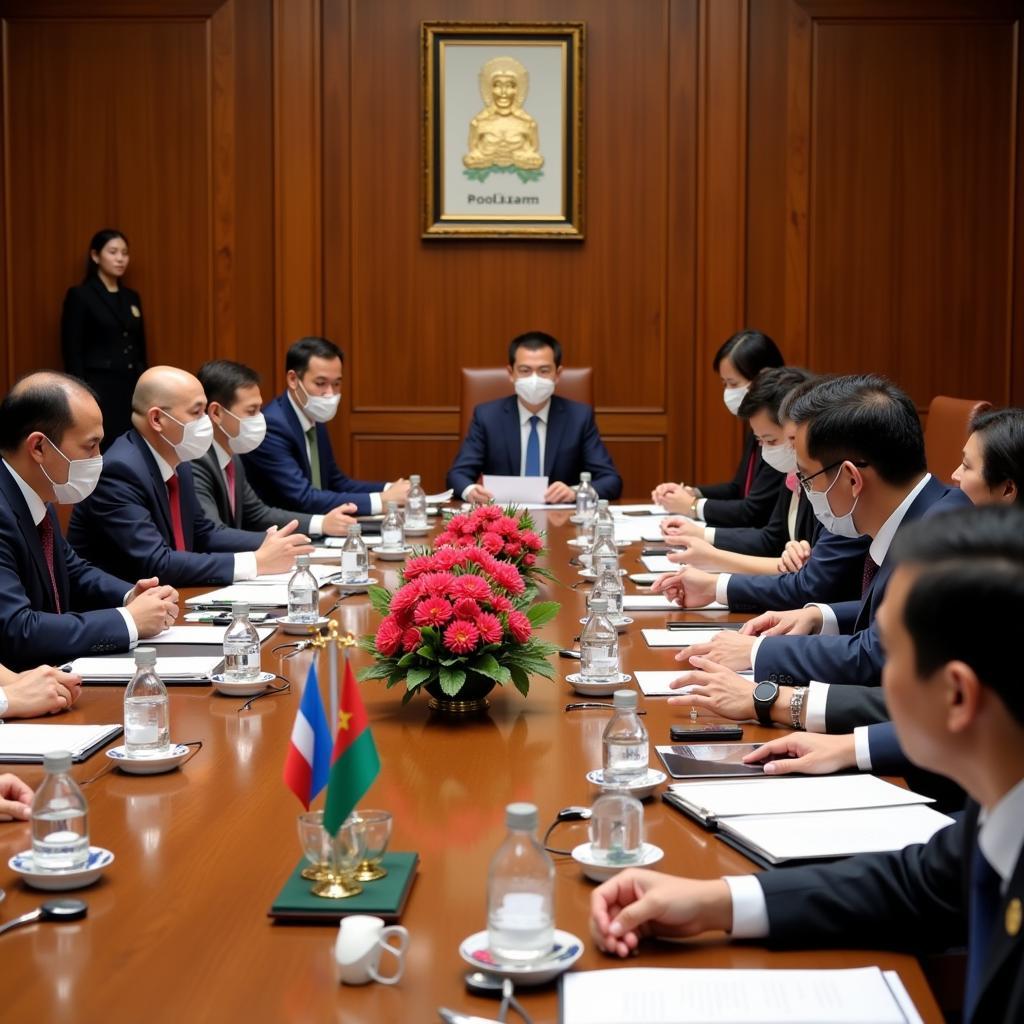The concept of a single ASEAN currency has been debated for years, raising questions about its potential advantages and disadvantages for the region’s diverse economies. This article explores the potential benefits and drawbacks of adopting a unified monetary system in Southeast Asia.
A single currency for ASEAN, while a complex proposition, holds the potential to reshape the economic landscape of Southeast Asia. Let’s delve into the potential pros and cons of such a significant shift.
Potential Benefits of a Unified ASEAN Currency
A single currency could simplify cross-border transactions, reducing exchange rate fluctuations and transaction costs for businesses and consumers. This could stimulate intra-ASEAN trade and investment, fostering greater economic integration within the region. A common currency could also enhance price transparency, making it easier for consumers to compare prices across borders and promoting competition.
- Reduced Transaction Costs: Eliminating currency exchange fees could significantly lower the cost of doing business within ASEAN.
- Increased Trade and Investment: A stable, unified currency could encourage cross-border trade and attract foreign investment.
- Enhanced Price Transparency: A single currency would facilitate easier price comparisons across the region.
- Greater Monetary Stability: A unified monetary policy could help to stabilize inflation and exchange rates within ASEAN.
“A single currency could be a game-changer for ASEAN, simplifying trade and boosting investment. However, the challenges in implementation are significant and require careful consideration,” says Dr. Aris Setiawan, an economist specializing in Southeast Asian financial markets.
 Benefits of a Single ASEAN Currency for Trade
Benefits of a Single ASEAN Currency for Trade
Challenges and Drawbacks of a Single ASEAN Currency
Despite the potential advantages, the implementation of a single currency also presents significant challenges. The diverse economic structures and levels of development within ASEAN pose a major hurdle. A single monetary policy might not be suitable for all member states, and some countries could lose control over their monetary sovereignty. Furthermore, establishing a central bank and managing the unified currency would require complex institutional arrangements and strong regional cooperation.
- Loss of Monetary Sovereignty: Individual nations would lose control over their own monetary policies.
- Diverse Economic Structures: A one-size-fits-all monetary policy might not be appropriate for all ASEAN members.
- Implementation Challenges: Setting up a central bank and managing a unified currency would be complex.
- Potential for Economic Shocks: A single currency could make the region more vulnerable to economic shocks affecting one member state.
What Would a Single ASEAN Currency Mean for Businesses?
Businesses operating within ASEAN could benefit from reduced transaction costs and increased trade opportunities. However, they would also need to adapt to the new monetary system and potentially face increased competition. Careful planning and strategic adjustments would be essential for businesses to thrive in a unified currency environment.
ASE Credit Union cashier’s check could benefit from a single ASEAN currency.
What Would a Single ASEAN Currency Mean for Consumers?
Consumers could enjoy greater price transparency and easier cross-border shopping. However, they might also face challenges related to price adjustments and the potential for inflation in some countries.
“While a single ASEAN currency offers potential benefits, it’s crucial to address the economic disparities within the region and ensure that all member states benefit equally,” adds Dr. Maria Lourdes Sereno, a former chief justice and expert in ASEAN constitutional law.
 Impact of a Single ASEAN Currency on Consumers
Impact of a Single ASEAN Currency on Consumers
Conclusion
The Advantages And Disadvantages Of One Asean Currency are multifaceted and complex. While a unified monetary system could stimulate economic integration and simplify transactions, it also presents significant challenges related to monetary sovereignty, economic diversity, and implementation. Careful consideration and thorough analysis are crucial to determine whether a single currency is a viable and beneficial option for ASEAN. Ultimately, the decision will depend on the ability of ASEAN member states to overcome these challenges and work together to create a stable and prosperous economic future.
FAQ
- What is the current status of the ASEAN single currency discussion? Currently, there is no official timeline for implementing a single ASEAN currency.
- Which countries are most likely to benefit from a single currency? Countries with strong economic ties and similar levels of development within ASEAN are likely to benefit the most.
- What are the biggest challenges to implementing a single ASEAN currency? The biggest challenges include economic diversity, loss of monetary sovereignty, and the complexities of establishing a regional central bank.
- Could a single currency make ASEAN more vulnerable to external shocks? Yes, a single currency could potentially make the region more susceptible to external economic shocks.
- What are the alternatives to a single currency for promoting economic integration? Alternatives include strengthening existing currency cooperation mechanisms and promoting greater use of local currencies in cross-border transactions.
- How might a single currency impact tourism in ASEAN? It could potentially simplify travel and spending for tourists visiting the region.
- What role would the ASEAN Central Bank play in managing a single currency? The ASEAN Central Bank would be responsible for setting monetary policy and managing the exchange rate of the unified currency.
Need More Help?
For further information and assistance regarding the potential implications of a single ASEAN currency, please contact us:
Phone Number: 0369020373
Email: [email protected]
Address: Thon Ngoc Lien, Hiep Hoa, Bac Giang, Vietnam
Our customer support team is available 24/7 to answer your queries.

